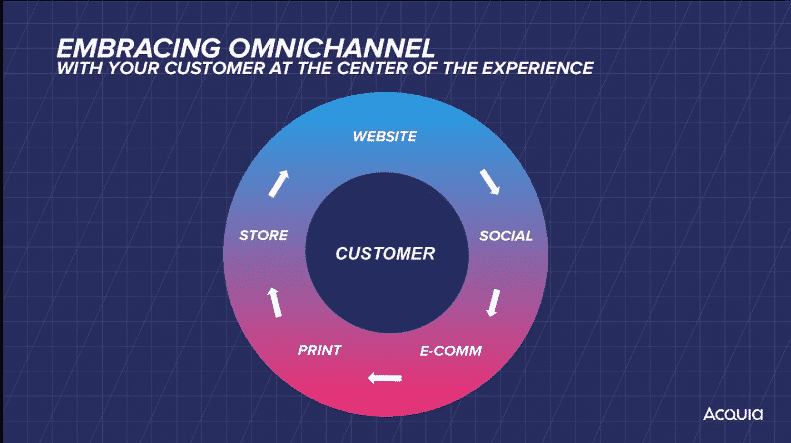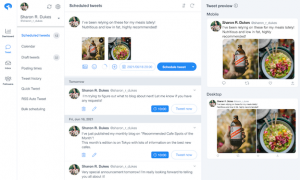With accelerating digital transformations, marketers need solutions to improve customer experiences.
“The pandemic has made customer journeys more digital than ever before,” said Tom Bianchi, VP of marketing EMEA at Acquia, in a recent webinar. “We believe marketing technology can help improve those digital experiences – helping your brand grow and increase revenue.”
Acquia’s Customer Experience report found that 94% of marketers claim their organization had changed their digital customer experience strategy in the 18 months following the 2020 pandemic. And while there are always factors specific to every brand, the pandemic accounts for the bulk of this transformation.
“A big chunk of this was driven by COVID-19,” he said. “Coming out of the pandemic in 2022 – I say that optimistically – many trends in buyer behavior that have changed over the past two years are probably going to stay.”
“We think one of the trends that is going to stay is that people will buy and interact with brands more digitally than ever before,” he added.
Digital experiences are key to brand success going forward, so marketers need to prioritize and optimize customer interactions across all platforms and channels.
Use marketing technology to help build customer trust
One of the most challenging obstacles facing brands today is the lack of customer trust. According to the same Acquia report, 87% of consumers say that either they don’t remember or didn’t opt in to receive communications from certain brands. What’s more, 26% of customers lose trust in brands due to poor customer service experiences and 21% lose trust due to substandard purchase experiences, according to data from Statista.
To address these issues, Bianchi recommends marketers turn to CX solutions found in marketing technology.
“We asked marketers what they were investing in over the past year and a half,” he said. “55% said they were investing in digital experience platforms, 50% said they were investing in customer data platforms, and 45% of people said they investing in digital asset management software as well as content management systems.”
These technologies – specifically DXPs and CDPs – are designed to manage vast quantities of customer data. Successful digital marketing programs can leverage insights gathered from these data pools, then deploy customer-focused strategies that offer enhanced digital experiences.
Implement content personalization solutions
“The biggest trend we saw [in the report] was that 83% of marketers struggle to create content that can be released across all their digital platforms,” said Bianchi. “There is an increasing number of channels that we go to market through.”
“Making sure that your content is consistently distributed evenly across all those platforms at the right time is a massive challenge,” he added.
Accelerated digital transformations have made this problem even more complicated, especially when it comes to digital commerce and consumer behavior. More and more digital customers are expecting personalized experiences at every touchpoint, yet marketers often have difficulties keeping up with these needs.
“We have peak screen time and we’re spending more time on devices than ever before,” said Jake Athey of Acquia company Widen in the same presentation. “And there’s declining trust: We’re conscious about security and where we place our time, attention, personal information, and dollars.”
He added, “These influences have increased pressure on marketers to connect with customers in more meaningful ways across a range of channels.”
According to Athey, content is the key to addressing these difficulties and achieving better personalization.
“Structured content is essential to scaling digital commerce and scaling customer value with rich experiences,“ he said. “Organizations must provide accurate, compelling content to their customers across all channels by creating and employing it strategically.”
Athey pointed to New Balance’s content strategy, which employs a DAM platform to help deliver relevant content to customers on every channel. Its success shows that knowing what customers want out of these digital channels provides a strong foundation for content creation efforts.

Embrace an omnichannel experience framework
Omnichannel frameworks have the potential to improve customer digital experiences. Unlike the multichannel approaches it’s often confused with, omnichannel brands focus on the needs of customers on each channel and then adapt their digital assets accordingly.
“More than ever, an omnichannel experience means being at the tip of your customers’ fingertips anytime, anywhere, and on any device,” Athey said. “Omnichannel is putting the customer at the center of all the ways they interact with your brand over time.”
He added, “Customers remember how they feel after encountering a brand at various connected touchpoints, so regardless of time, place, or channel, the whole of their experiences with that brand leaves them with a memorable impression.”

Aside from knowing which channels customers are finding them on, many brands need to gain a better understanding of their audience journeys. The stage of the customer lifecycle will determine what type of brand interactions customers are expecting, so marketers would be wise to let these insights empower their digital interactions – no customer wants to be pushed to purchase a product after just hearing about it, and no one wants introductory reading materials when they’re ready to buy.
“When brands do omnichannel effectively, users should be able to move freely from one channel to the next, building a relationship that improves the overall buying experience and encourages brand loyalty,” Athey said.
The post How marketers can prioritize digital experiences appeared first on MarTech.
(14)









